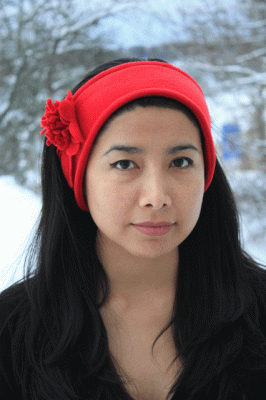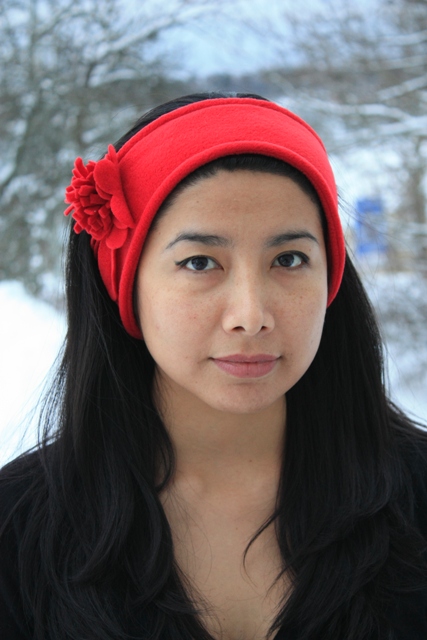|
Jeanette Mauricio is a journalist with studies in Human Right and Master’s degree in Feminism and Gender issues. Currently she is a doing the European Voluntary Service at The Peace Institute. The blog is written by the peace institute’s present or former staff, guest researchers, board members or invited guest writers. The opinions are the author’s own. |
The 25th of November is the International Day for the Elimination of the violence against women and Finland has reason to remind that day. When people think about violence against women, they think about countries where honour killings, when women are murdered in the name of family, trafficking or genital mutilation occur. But why we don’t look inside of this country? According to a publication from the Ministry of Social Affairs and Health in 2008, in Finland around 21 women are murdered by their partner every year. 90% of all acts of interpersonal violence affect women. 43,5% of Finnish women has become subjected to physical or sexual violence or threat of violence at least once after the age of fifteen. In October of 2010 one Ålandic newspaper wrote that one in five women has experienced violence in an intimate relationship the last year. In other words there are violence against women and it’s not to democratic deny it or ignore it. Actually it’s time to visibilize it.
The United Nations defines violence against women as any act of gender-based violence that results in, or is likely to result in, physical, sexual or mental harm or suffering to women, including threats of such acts, coercion or arbitrary deprivation of liberty, whether occurring in public or in private life. And this situation is present in all the countries. According to the UN, at least one in three women around the world has been beaten, coerced into sex, or otherwise abused in her lifetime -the abuser is usually someone known to her- and usually that aggression is committed by a man or men. UNIFEM reveals that violence is a major cause of death and disability for women aged 15 to 44 years. Moreover, several studies have revealed increasing links between violence against women and HIV/AIDS. Actually, women who have experienced violence are at a higher risk of HIV infection: a survey in South Africa showed that women who were beaten by their partners were 48% more likely to be infected with HIV than those who were not.
As we can see, inequality is present in all the countries, but at different levels. Actually, the Nordic countries are in the front of the equality in the world. According to The Global Gender Gap Report 2010, made by the World Economic Forum, Finland is the third in the world, Iceland is the first and Sweden holds the fourth position. Finland has showed that women can have access to positions with power like the presidency and the head of ministries. But that is not enough. To have a female president is great, but it doesn’t mean the equality has arrived to Finland as a whole; it only means that women have more possibilities to access positions that historically were exclusively for men. Finland is one of the countries that are more eager to promote equality but it’s not an equal society.
According to Finnish victim studies, 90% of all acts of interpersonal violence affect women. A 2005 Finnish female victim study suggests that 20% of all women have experienced violence at some point in their current relationship. Annually, approximately 100,000 women are subjected to physical or sexual violence or threats by their companions, reported the Ministry of Social Affairs and Health in 2008. On Åland, according to statistics from Ålandic police authorities, the number of reported crimes with a female as victim was 76, in 2007 (45 were in the home, 7 on the ferry, 5 in a club/restaurant/bar, and the rest happened in other places). In 2009, the newspaper Ålandstidningen wrote that 100% of suspected persons for committed sexual crimes against women were men, in 2005; and in 2007, the number of rapes on Åland was five, and all of them were against women.
The Finnish government is trying to take measures; in June the ministerial group for internal security approved a new action plan for the years 2010-2015 about how to reduce the violence. Last October, 66 concrete actions about violence were presented; how to prevent repetition of crime, combating sexual violence and take into account particularly vulnerable groups, ethnic minorities, sexual minorities, gender minorities and the disabled. It’s a Government’s responsibility to preserve the life and the quality of life of half of the population in Finland.
There are sectors that use to criticize this kind of investment. Therefore it is appropriate to analyze this situation in an economical way. Societies with more equality are more productive. And it’s important to remind who produce this violence. Violence against women is a male problem -the way their masculinity are constructed – with serious consequences for women. In a report UNIFEM concludes that domestic violence alone cost approximately US$1.16 billion in Canada; US$5.8 billion in USA; and in Australia, violence against women and children costs an estimated US$11.38 billion per year. This kind of masculinity is expensive for the governments, and creates an insecure environment for women. However it’s important that governments all over the world continue investing this money until the society achieves equality.
Violence against women is based in inequality, when men think that they are superior to women, because in this society male attributes have more power and are more respectable than the female ones. This inequality is supported when the stereotypes are perpetuated (for example: boys don’t cry and girls are more sensitive) or when someone is punished for switching the roles (for example: a woman is criticized if she spends more time at work than at home or a man is criticized if he says he can’t do sports with his friends because has to take care of his kid).
However, everybody can contribute to equality, breaking down stereotypes, questioning gender norm for boys and girls, changing the roles according sex, only to mention some of them. The inequality was established many centuries ago. But the feminist movements have been struggling for equality. Indeed they were trying to find a day to visibilize this kind of violence.
In 1981, women’s activists in different part of the world choose the 25th of November as a day against violence against women, commemorating the brutal assassination of the three Mirabal sisters, political activists and defenders of women’s right in the Dominican Republic, in 1960 by orders of the dictator Rafael Trujillo. In 1999, the United Nations designed this day as an International Day for the Elimination of Violence against women and invited governments, international organizations and NGOs to organize activities designated to raise public awareness of this problem.
Definitely, one day it’s not enough to remind us of this situation, because violence is committed every day during the year. Probably the perpetrator is your friend, your neighbor, your teacher, your boss, someone close to you and you don’t know it or don’t want to admit it. But at least there is one day when people around the world have the possibility to think about what violence means in their everyday life, in their different relationships (family, friendship, colleagues, etc.); and to think how to stop it. Sometimes simple things make the difference, like refusing stereotypes (in movies, songs, novels, etc), reporting any kind or aggression (physical or psychological), denouncing sexist jokes or comments, for example. This 25th of November is time to take action.
The Global Gender Gap Report 2010. By The World Economic Forum
Recommendations for the prevention of interpersonal and domestic violence. Publications of the Ministry of Social Affairs and Health 2008
Is a woman you know being abused in a relationship? A guide for family members, friends and neighbors. Women’s Line




